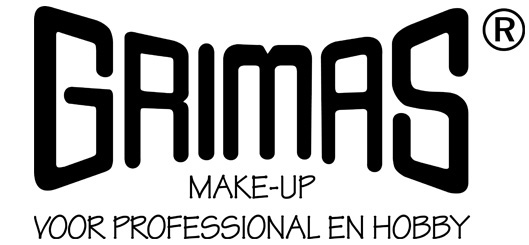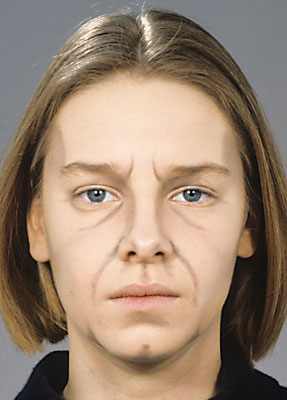Important areas for shading are the eye sockets, the temples, the side of the nose and below the cheekbones. The vertical frown wrinkle and the naso-labial ('nose-lip') fold are also important areas to shadow.
You draw the lines with a flat sable-hair brush. By placing it obliquely on the skin you get a sharp edge on one side and a fading effect on the other side. To determine which side should be sharp and which side faded, you start from the centre of the face (nose). Create a fading effect towards the outside. The lines from the eyes towards the forehead (vertical frowning wrinkles) and the naso-labial ('nose-lip') fold are therefore sharp in the direction of the nose and more blurred towards the outside. Bags under the eyes are sharp on the lower side and must be faded towards the upper side.
The parts of the face that have not been shaded now seem to have been brought forward.












